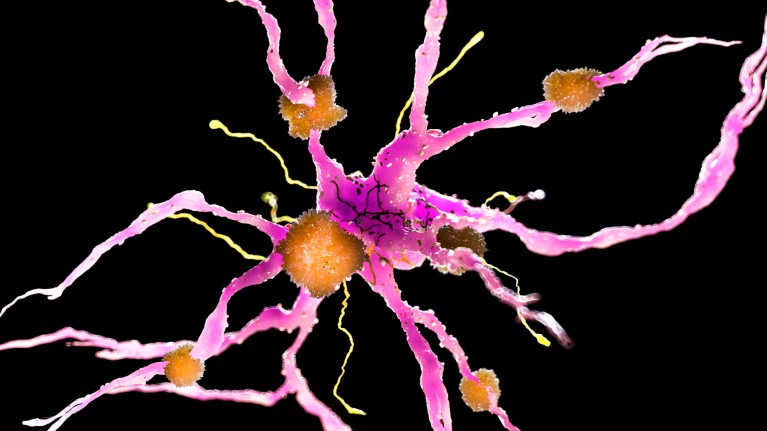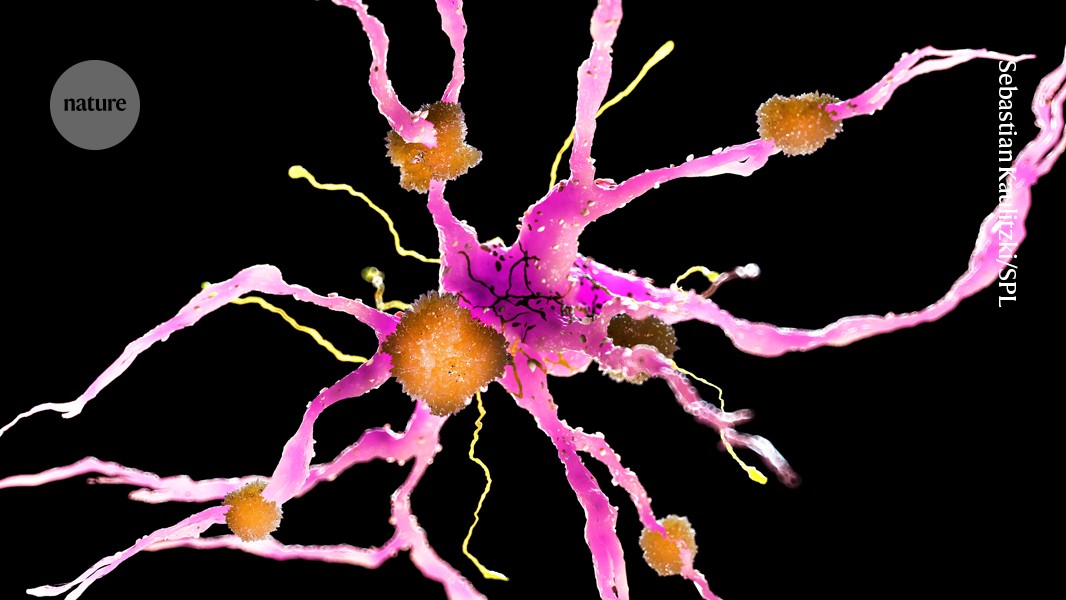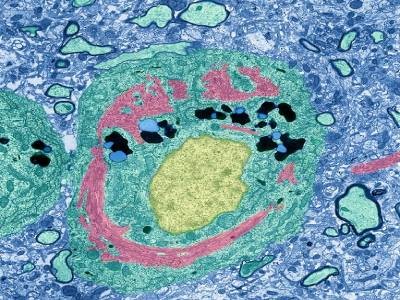
Artist’s illustration of a nerve cell (pink) surrounded by amyloid plaques (orange), which are associated with Alzheimer’s disease.Credit: Sebastian Kaulitzki/SPL
A man who seemed genetically destined to develop Alzheimer’s disease while still young has reached his mid-70s without any cognitive decline ― in only the third recorded case of such resistance to the disease. The findings, published today in Nature Medicine1, raise questions about the role of the proteins that ravage the brain during the disease and the drugs that target them.
Since 2011, a study called the Dominantly Inherited Alzheimer Network (DIAN) has been following a family in which many members have a mutation in a gene called PSEN2. The mutation causes the brain to produce versions of the amyloid protein that are prone to clumping into the sticky plaques thought to drive neurodegeneration. Family members with the mutation invariably develop Alzheimer’s at around age 50.
This is how an Alzheimer’s gene ravages the brain
Then, a 61-year-old man from this family showed up at the DIAN study’s clinic with full cognitive function, and the researchers were shocked to discover that he had the fateful PSEN2 mutation. The man’s mother had had the same mutation, as had 11 of her 13 siblings; all had developed dementia around age 50.
The researchers were even more shocked when scans revealed that his brain looked like that of someone with Alzheimer’s. “His brain was full of amyloid,” says behavioural neurologist and study co-author Jorge Llibre-Guerra at Washington University in St. Louis, Missouri.
What the man’s brain didn’t contain, however, were clusters of tau ― anotherprotein that forms tangled threads inside neurons. Positron emission tomography (PET) scans revealed that he had a small amount of abnormal tau and that it was only in the occipital lobe, a brain region involved in visual perception that is not usually affected in Alzheimer’s disease.
Cognitive resilience
Over the course of 10 years, Llibre-Guerra and his colleagues ran memory tests and other cognitive assessments to determine whether the man really was resistant to Alzheimer’s. Overall, his test scores were normal and remained constant over the years. Some scores even rose owing to practice.
Next, the researchers looked for genetic explanations for the man’s resilience. Previous research has found protective mutations in two people who carry a gene that invariably causes early-onset Alzheimer’s. But the man in the DIAN study didn’t carry either of these mutations.



